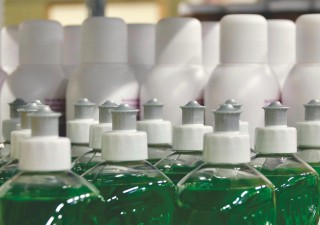When is a 3D mark distinctive?
31 October 2024

The law on trademarks of the Philippines (Part III of Republic Act No. 8293 – IP Code) defines a trademark as any visible sign capable of distinguishing the goods or services of an enterprise and shall include a stamped or marked container of goods. It is broad enough to include almost any visible sign considered as non-traditional such as position marks, holograms, motion marks, colour marks and three-dimensional (3D) marks, and the Intellectual Property of the Philippines (IPOPHL) has issued registrations covering these marks for quite some time, but it was only on February 14, 2024, with the issuance of the revised Rules on Trademarks, Service Marks, Tradenames and Marked or Stamped Containers that examination practices were issued concerning how the marks should be depicted, the number of views to be submitted, the use of broken and solid lines to depict elements of the composite marks to be disclaimed and other procedural matters.
The IP Code provides a list of the marks that are not registrable, and further gives an idea of what marks may be considered as not distinctive, e.g.: (i) those that have become customary or usual to designate the goods or services in everyday language or an established trade practice; (ii) those that designate the kind, quality, quantity, intended purpose, value, geographical origin, time of production of the goods or rendering of the service or its characteristics; (iii) shapes necessitated by technical factors; and (iv) colours alone. The IPOPHL would accept as prima facie evidence that said marks have become distinctive if the applicant can prove exclusive and continuous use in commerce in the Philippines for five years before the claim for distinctiveness is made.
A recent decision of the Office of the Director General shows how an application for a 3D mark was rejected for being not sufficiently distinctive (Green Cross Inc. v. Director of Trademarks, Appeal No. 04-2023-0017, May 31, 2024). On September 17, 2020, Green Cross filed a 3D mark application for its bottle design for rubbing alcohol, rubbing alcohol compounds, sanitizer, and disinfectant in Class 5. A partial view of the representation of the mark is shown below. The examiner issued several office actions.
One of the more significant objections was the order of the examiner to disclaim the shape of the bottle. The examiner commented that the shape is usual and lacks distinctiveness. Green Cross did not agree and argued that its mark was far from being usual or common and averred that its marks consists of an irregularly shaped rectangular cuboid bottle with a squarish cross-section and that these elements are not functional, but ornamental, and no other products in the market for rubbing alcohol and sanitizer use the same bottle shape.
Green Cross further argued that there are bottle marks which have been registered even without any label; hence, its mark should also be allowed because it is claimed to be one of the “most trusted brand of sanitizer and alcohol in the Philippines today.” The examiner was not convinced and refused the application. On appeal, the Director of Trademarks (BOT) affirmed the refusal, and further ruled that the Green Cross’ bottle, when put side-by-side with other alcohol containers, would look like a generic container, and that the current design of the bottle without the markings does nothing for the consumer to differentiate it from the other bottles in the market. On the claim of Green Cross that its mark has secondary meaning by submitting affidavits of five persons, the BOT Director said that said five affidavits, which were unsubstantiated, hardly qualify as a substantial portion of the consuming public in the Philippines of about 114 million people. Dissatisfied, Green Cross appealed to the Office of the Director General, claiming that it had provided evidence more than that required by the Rules, and insisted that its bottle shape and green colour make its mark distinctive.
The Director General affirmed the decision of the BOT Director, dismissed the appeal of Green Cross and ruled as follows:
The Green Cross bottle design is not distinctive and necessitated by technical and functional considerations. The side-by-side comparison with the other alcohol containers in the market shows that the Green Cross bottle is typical. The BOT Director went so far as doing a Google search of the front view of the bottle mark which showed other products as visual matches negating the claim that the design points distinctly to Green Cross. And when another view of the bottle design is searched, what appears is a stock photo of a standard pump type hand sanitizer.
On the claim of secondary meaning, while Green Cross submitted advertisements and the Nielsen Retail Trade Audit Reports showing Green Cross as a leading brand in the market, the BOT Director in its Comment to Green Cross’ appeal stated that his decision rejecting the application was based on the evidence submitted during the examination proceedings which consisted only of the affidavits from five individuals who were its merchandisers and grocery store shoppers, and empty assertions that the mark is a leading brand since 2013. There were no sample advertisements submitted, and the BOT Director considered the evidence submitted during the examination of the application as insufficient. The BOT Director cited a decision of the U.S. Trademark Trial and Appeal Board which stated “we do not consider the declarations of approximately 12 of the Applicant’s distributors as representative of the ordinary saw blade consumer.”
The Director General also noted that Green Cross disclaimed the 3D shape of the bottle in its existing trademark registration filed in 2017 and registered in 2021. Thus, Green Cross has not really shown long and continuous exclusive use of its 3D mark.
This decision of the IPOPHL Director General certainly gives rise to several questions about the registrability of a 3D mark, e.g., what is the measure of distinctiveness, is claiming secondary meaning a requirement for registrability and whether the applicant has to submit a survey report done by an independent service provider to show continuous exclusive use for five years prior to the date of filing to prove secondary meaning.








